Other than Portsmouth, VA where we used to live before setting off on our 50 state road trip, the city we’ve visited most often over the last 10-15 years has been Cincinnati.
We really like Cincinnati, but that’s not the reason we’ve returned so frequently. Instead, it’s because we have some good friends there and it’s a ~10 hour drive from Portsmouth, VA which meant we’d sometimes visit for a long weekend (or longer).
That’s meant we’ve done a fair amount of stuff in Cincinnati over the years (including all these things as part of our road trip), but there’s still been a lot we’ve missed out on.
One Cincinnati attraction we decided to visit recently was the American Sign Museum – the largest sign museum in the US that’s open to the public (I’m not sure if that means there’s a private sign museum in the US that’s even larger?!). The museum is in a building that has a sign atop it saying ‘Cincinnati Sign Garden’, a reference to the building’s old incarnation as Cincinnati Gardens – an events venue.
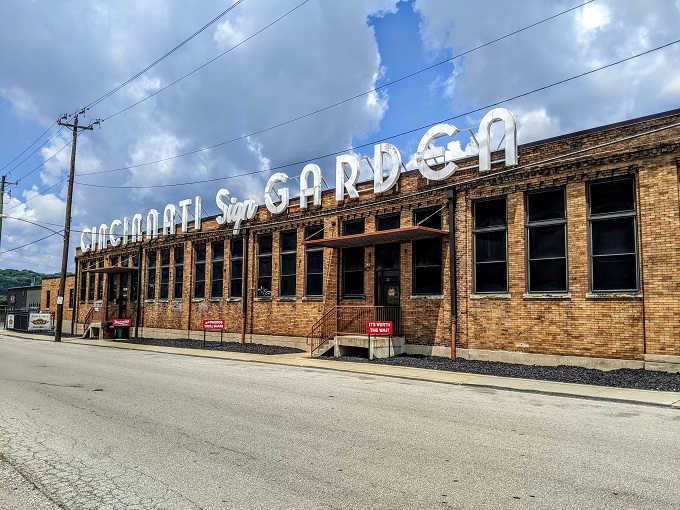
The American Sign Museum starts outside as you’re greeted by several signs at the entrance, from a genie made of fiberglass to an old Holiday Inn sign.
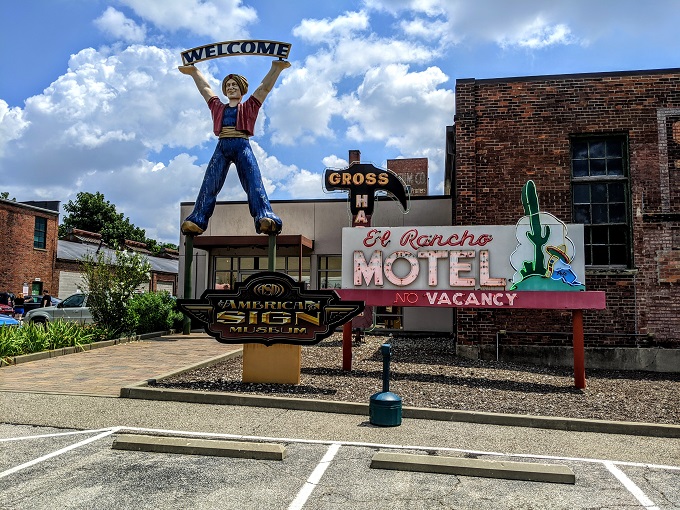

COVID-19 Procedures
We visited the museum a couple of weeks after it reopened in mid-July 2020, having shut its doors for a few months due to COVID-19. I was impressed with how seriously the museum was taking its responsibility of keeping its staff and visitors as safe as possible. Admission was restricted to help ensure social distancing, everyone’s temperature was taken when entering and face masks were required.
Everything was being kept well-sanitized too. For example, when paying by credit card we had to sign the receipt. After taking a pen from a mug marked as ‘Clean Pens’, we placed our used pen in a mug marked ‘Dirty Pens’. The dirty pens were then sanitized before being used again.
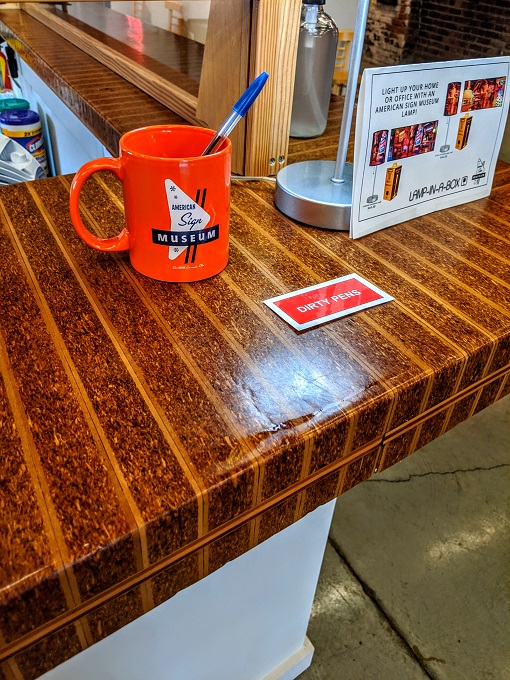
The museum has several laminated self-guided tour handouts for visitors to use as they walk around. At the end of your visit, these guides are handed back to the admissions desk for them to be sanitized before being used again.
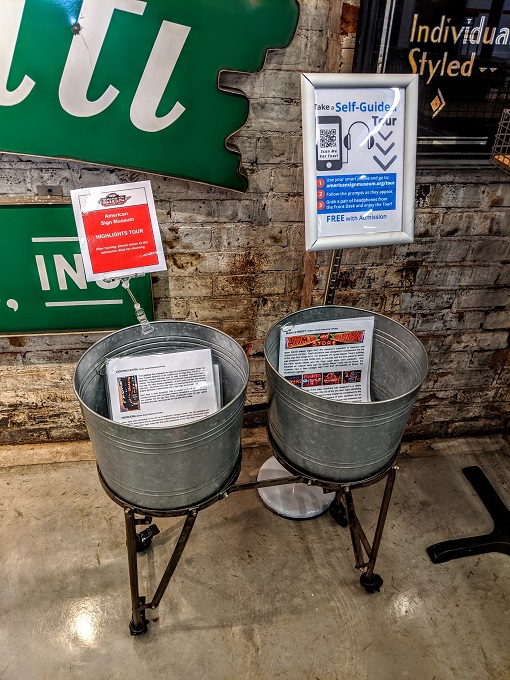
The American Sign Museum had a number of hand sanitizer stations located around the building…
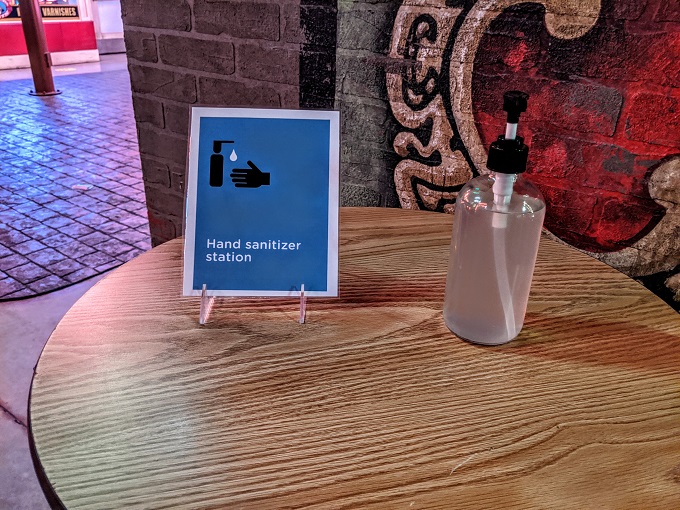
…and had signs on the floor reminding visitors to keep 6 feet from each other to help with social distancing. Each era’s signs were a different color which were noted on the self-guided tour handouts which helped identify which section of the American Sign Museum you were in.

I’ve tried to steer clear of spending a long time in public buildings as best as I can since COVID-19 hit, so I was pleased with how the museum had everything set up as they seemed to be doing everything they could to ensure everyone’s safety. All the staff members we came into (socially distant) contact with were also incredibly friendly, so the museum seems to have done a great job with the people they’ve hired.
American Sign Museum Exhibits
Anyway, on to the fun stuff! The museum is split into a few sections based on the types of signs found in that section which, in many cases, are based on the period of history when they were created and used.
Letter Wall
One of the first exhibits you see is the Letter Wall – a collection of different signs from over the years which includes ones for Sunoco and Burger King.
The Sunoco sign is neon-backlit, made of acrylic and was built in the mid-1950s. There aren’t many signs such as these remaining because they were created when the use of plastic was fairly new, so they weren’t built as durably as they are nowadays.
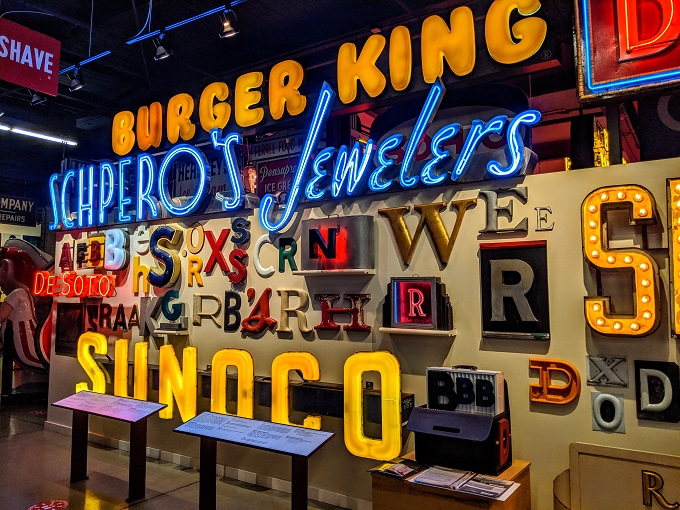
One of the most prominent signs found in the American Sign Museum is a Frisch’s Big Boy. The Frisch’s Big Boy signs have changed over the years to lessen the character’s curves to try to help reduce the association with unhealthy eating!

Hand-Painted Signs
You’ll then move through to an area with hand-painted signs – some old, some new.
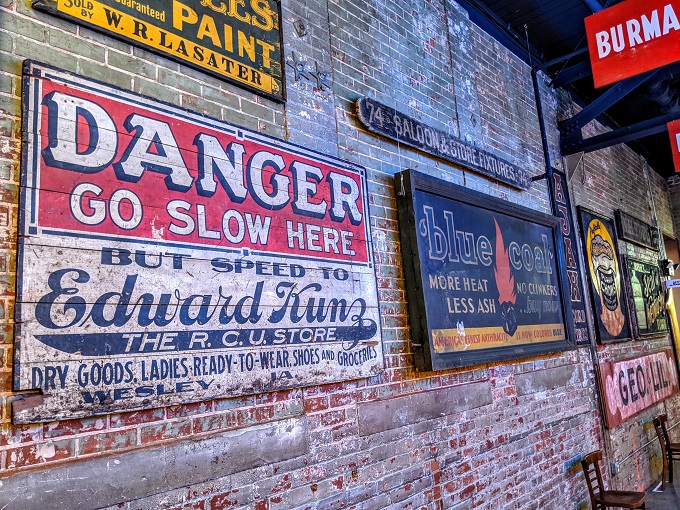
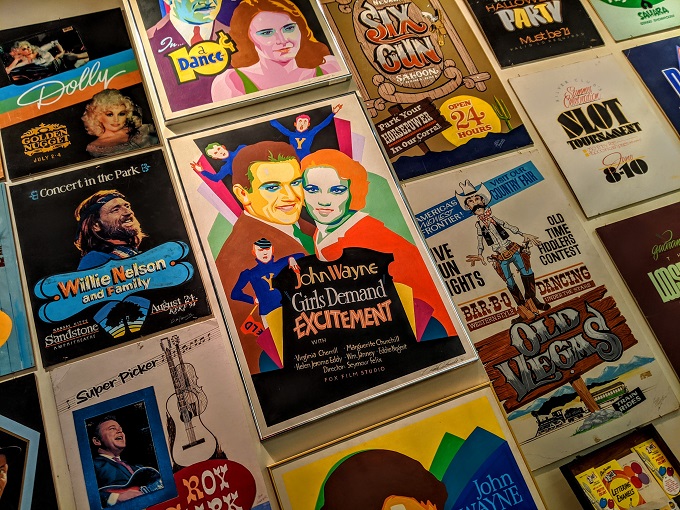
In addition to more than 200 signs themselves, the American Sign Museum has other exhibits which provide information about the sign making process, from using smalt for painting signs…
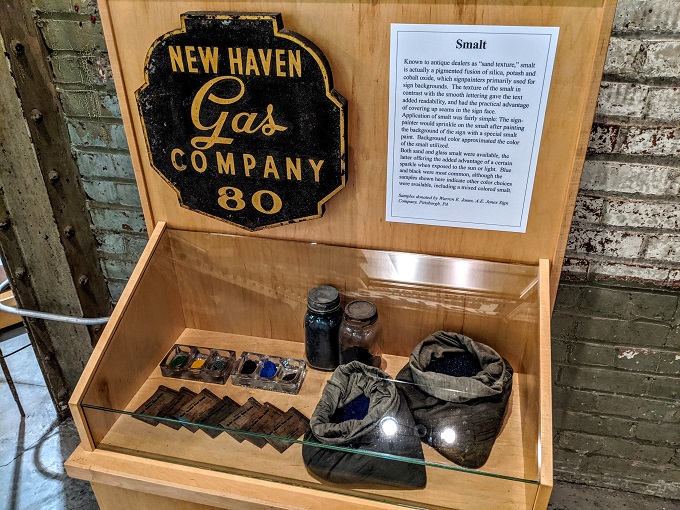
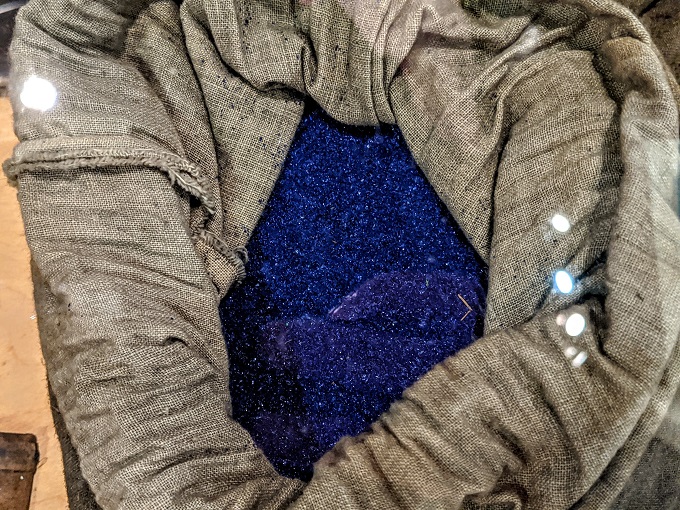
…to the painting kit used by a sign-maker called Steven Parrish who created signs from Kansas to North Dakota.
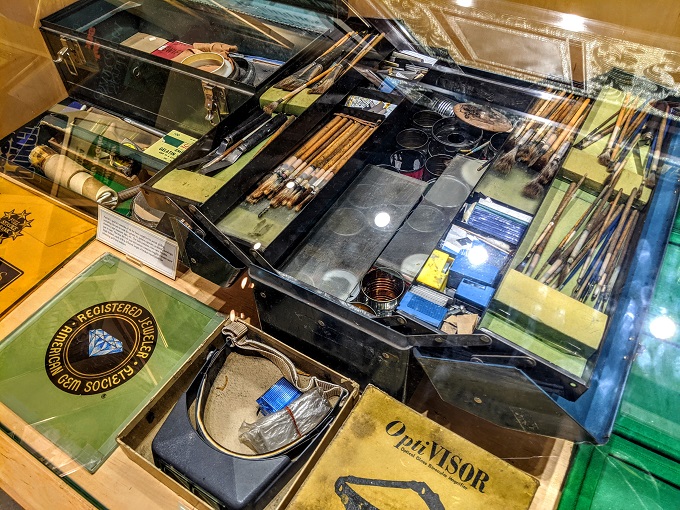
Until the mid to late-1800s, most signs only featured images. Very few signs included words due to a lack of literacy among the general population. Even heading in to the 20th century, many signs didn’t feature any words. After all, a picture – or, in this case, a 3D hat – speaks a thousand words as to what business you could expect to find inside a store.
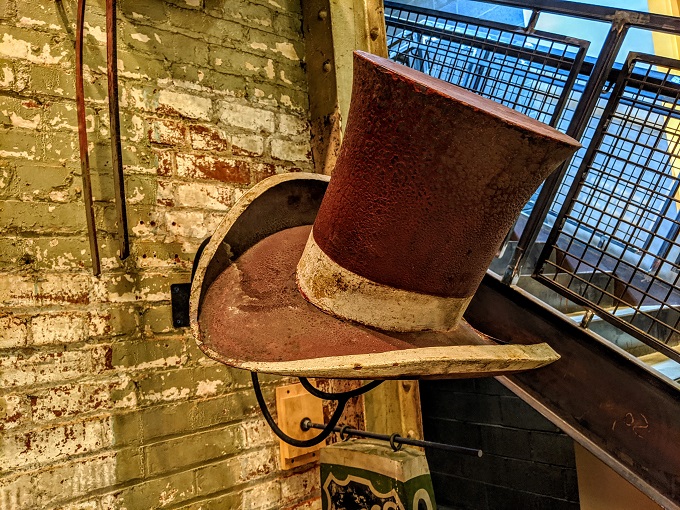
Lightbulb Era
The next exhibit area is a little smaller and features signs from the Lightbulb era – three guesses as to why it was called that.
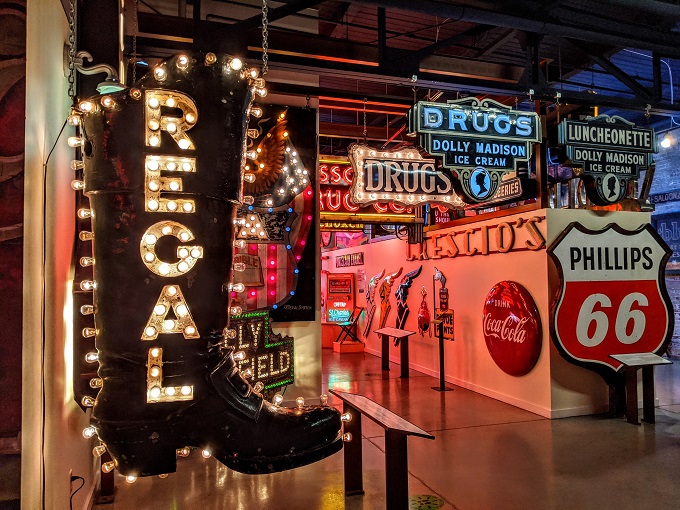
The Lightbulb era led on to two different areas – Main Street to the left and the Neon era to the right.
Main Street
Main Street is a recreation of a main street with different types of signage. The most prominent sign was an enormous McDonald’s sign which was erected in 1963 in Huntsville, AL.
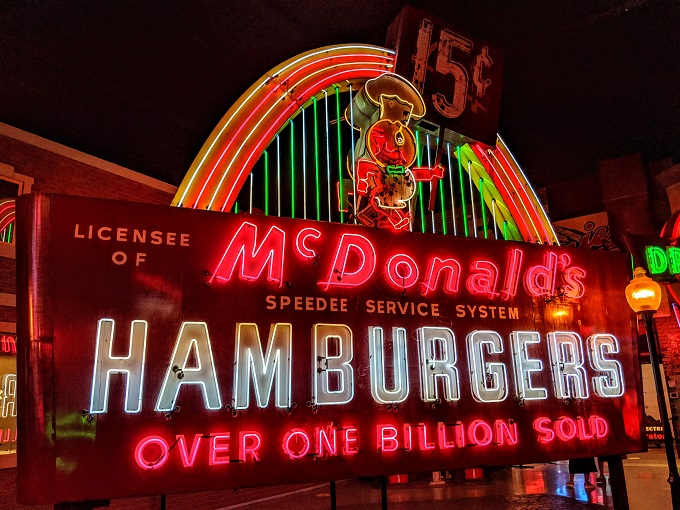
It’s a double-sided sign which, at first glance, looks the same on both sides, although there are some differences. One side has ’15c’ easily visible, while the other side has the ‘5’ covered up with sheet metal. The ‘1’ and ‘c’ were painted over, but much of that has flaked off over the years and so can still be (just about) seen.
Another difference is that on one side the sign says ‘Over One Billion Sold’, whereas the ‘One’ on the other side was replaced with ’99’ after McDonald’s had sold an additional 98 billion burgers.
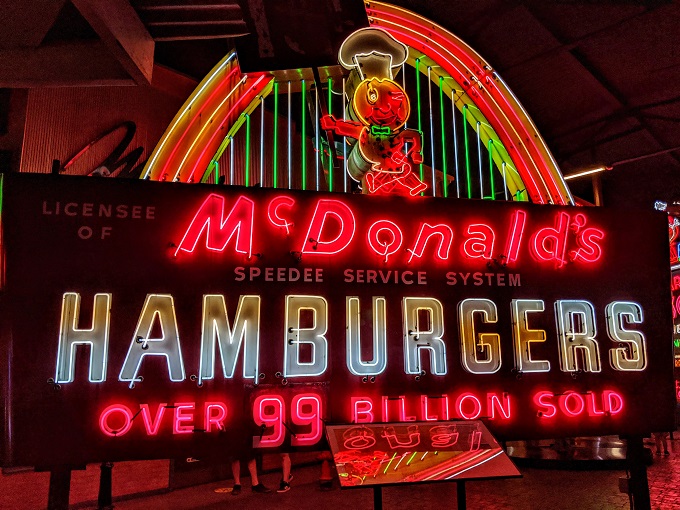
Main Street includes all kinds of other signs, including a Howard Johnson’s Ice Cream sign, a recreation of an Atlantic White Flash gas station and a giant camera that had a flash which turned on and off.
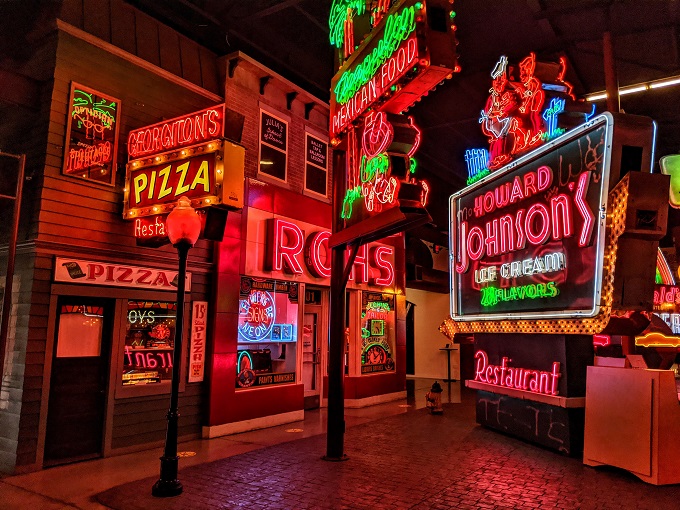
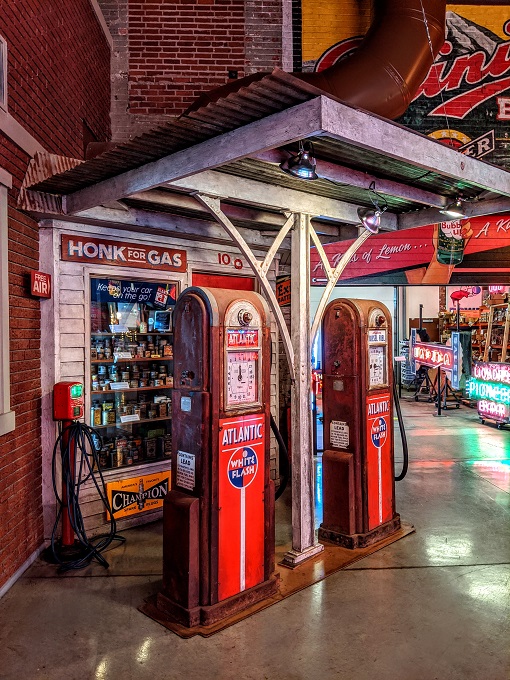
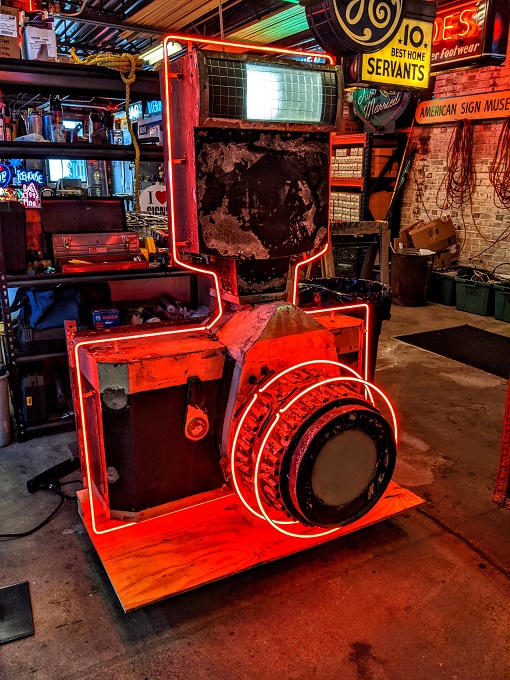
Neon Era
If you like neon signs, you’ll love the Neon era exhibit.
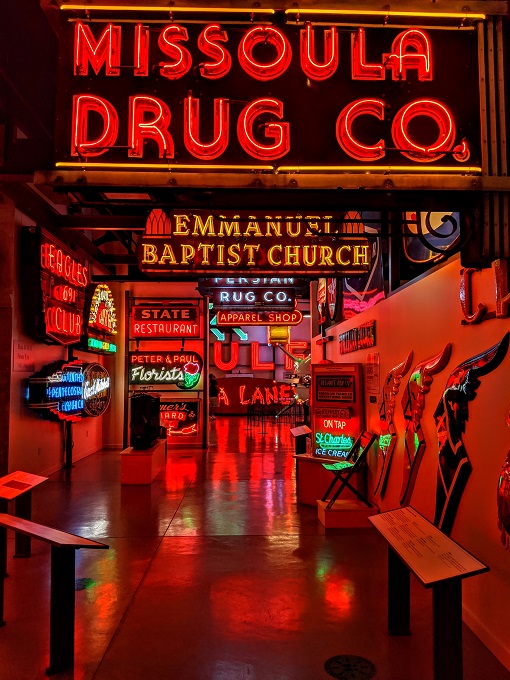
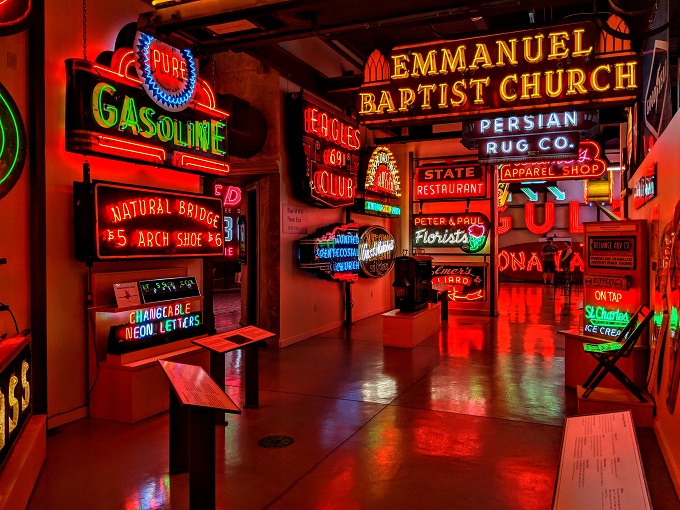
One of my favorite signs was in this area, although I don’t think it was a neon sign. I loved this particular Kelly-Springfield Trucks sign because of the way that holes had been punched in the metal to let the light through, almost like the most accurate gunslinger in the west had tested his skills against the sign and won.
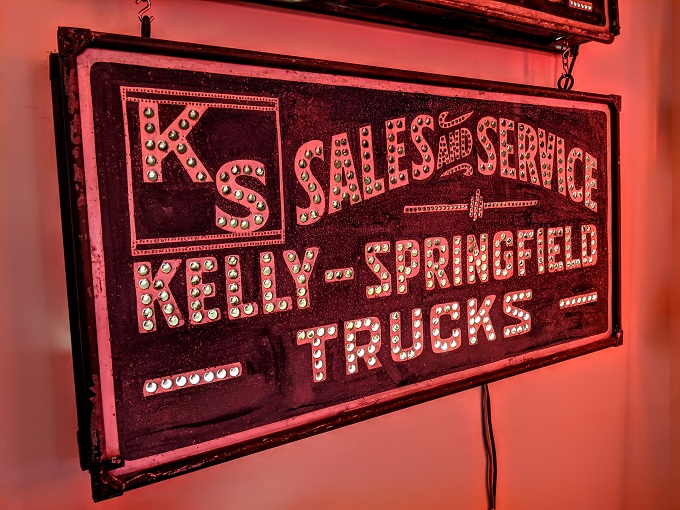
When looking at the sign more closely though, you can see that the hole punching has left the metal sign version of a hanging chad.
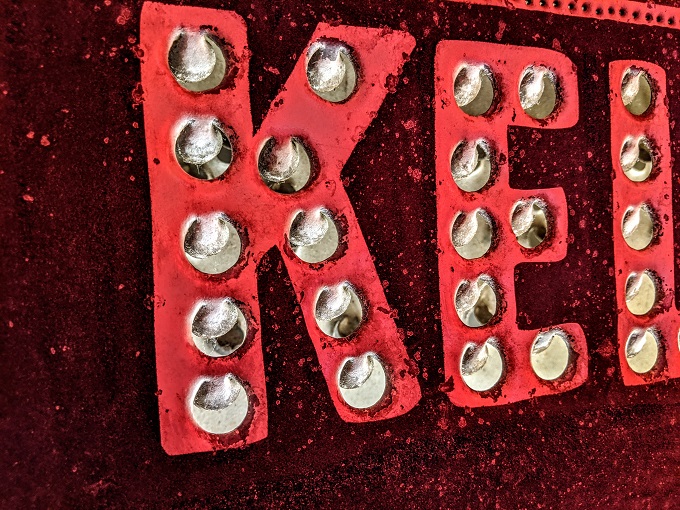
Plastics Era
The Plastics era features loads of other signs, many of which are neon as well.
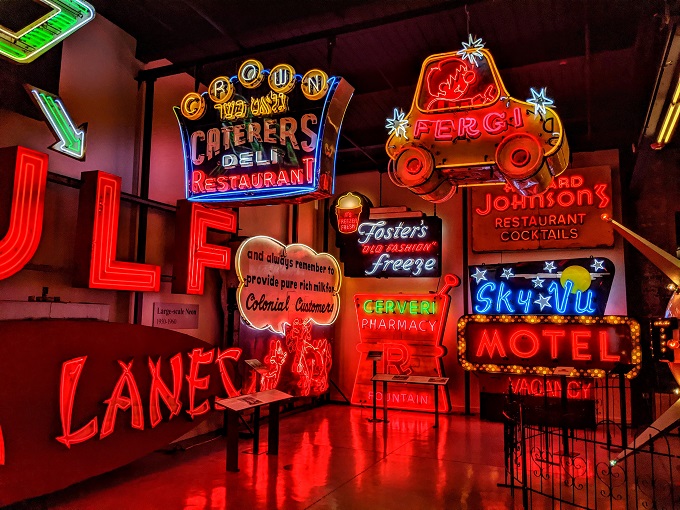
Its centerpiece is a rotating Sputnik-looking sign from Satellite Shopland in Anaheim, CA.
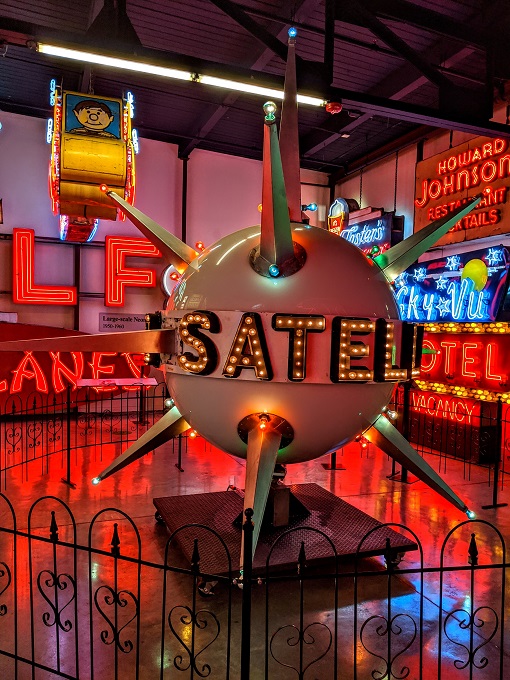
Other signs in this section include one for Big Bear – a grocery store in Columbus, OH…
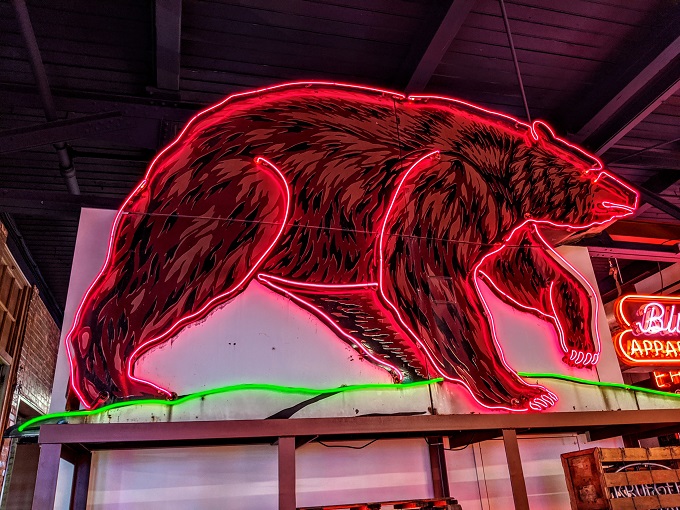
…and one for the Sky-Vu Motel, a sign from the 1950s for a motel in Kansas City, MO. This Sky-Vu Motel sign is a porcelain enamel sign and is apparently a “transition sign” because it bridges the Neon and Plastic eras.
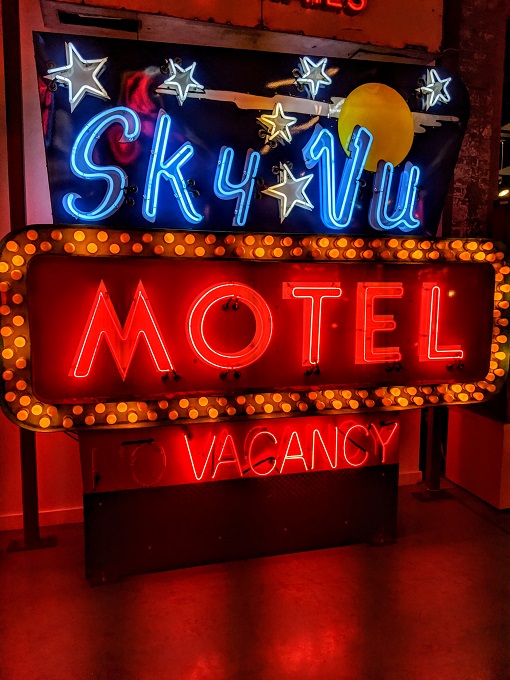
Seeing the signs in the museum gave me a new appreciation for the size of signs you see outside. For example, the American Sign Museum has a 1958 sign for Kona Lanes, a bowling alley in Costa Mesa, CA. Below is a photo of what it looked like when it was erected – the ‘Kona Lanes’ section looks big, but not too big.
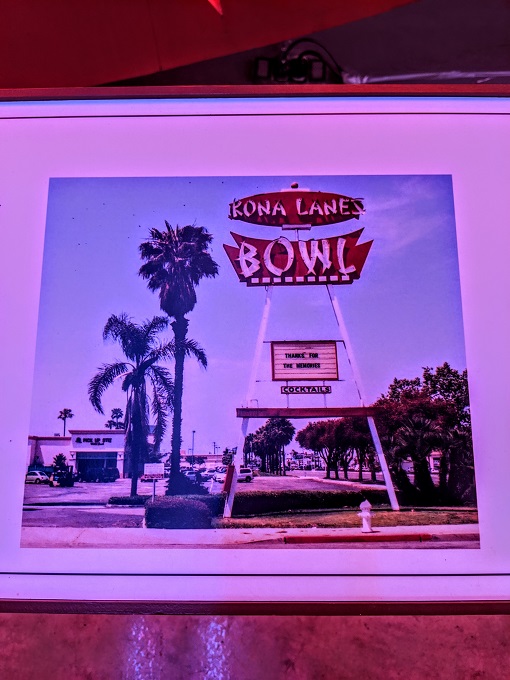
However, the sign looks much larger now that it’s on the ground – I’d guess it’s a good 10-12 feet long.
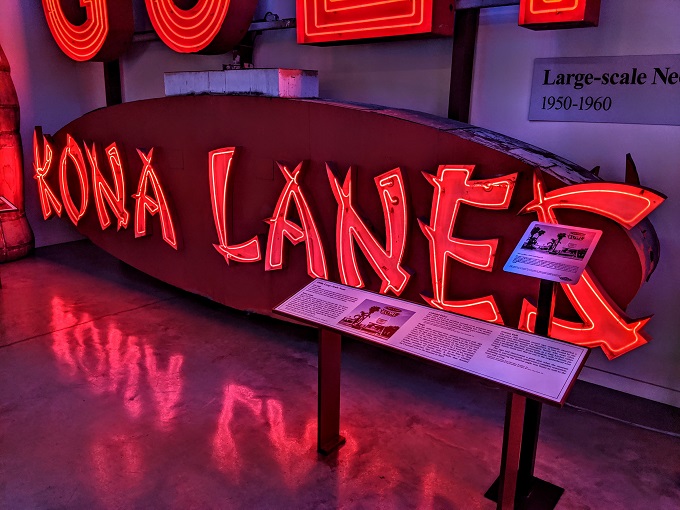
Another notable exhibit was the Shell sign in the photo below. That’s because it was one of the first signs that was created using vacuum-formed plastic production and is lit by incandescent light bulbs from the inside.
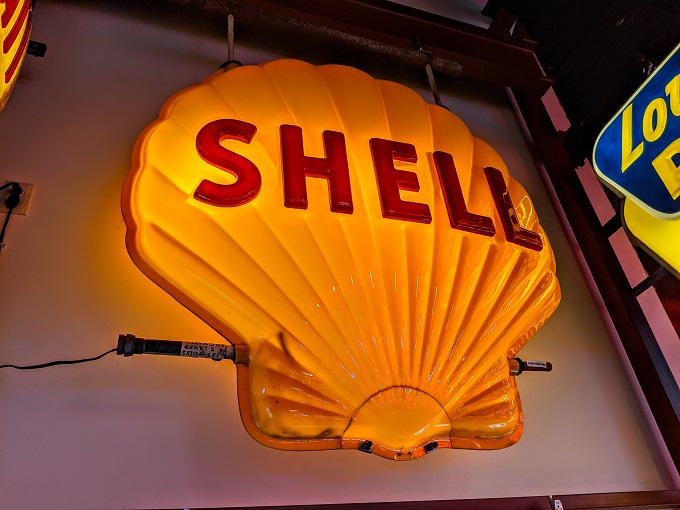
Events Center
The final area we visited in the American Sign Museum was the Events Center – a section where the museum holds public and private events in normal times, but which have presumably been curtailed for now due to COVID-19. They’ve given this area a theme of ‘Signs of Cincinnati’, such as this Chevrolet sign from the city’s first Chevy dealership.
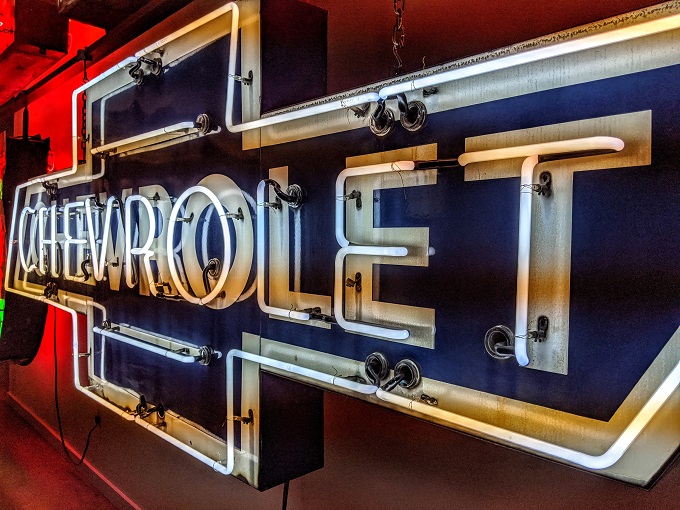
The Events Center does have more than one non-Cincinnati sign in it though. For example, this sign for Rock City in Chattanooga, TN used to be the side of a barn; before the barn was knocked down, this section was rescued so that it could be preserved at the museum.
Side note: we gave Rock City a miss when we visited Chattanooga last year as it seemed waaaaay overpriced for what you get. Instead, take the Lookout Mountain Incline Railway if you visit Chattanooga as that was a fun, unique experience which was definitely worth the money.
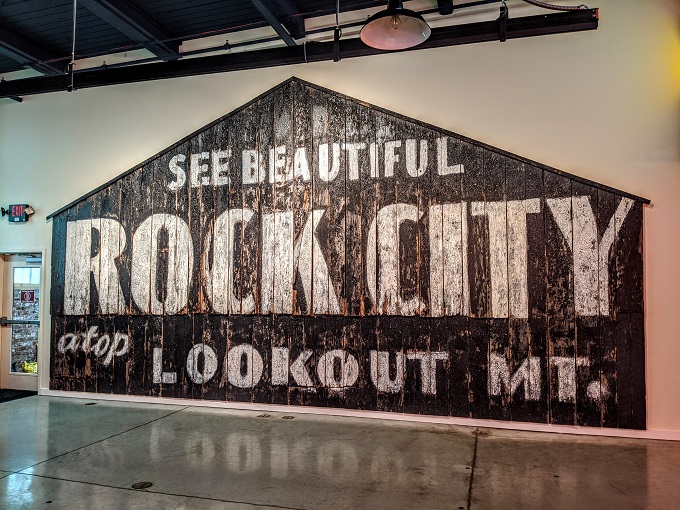
Gift Shop
No museum would be complete without a gift shop and the American Sign Museum is no exception. They have a relatively small gift shop, but it has all kinds of museum and sign-related items from magnets to postcards to pens to glasses to signs and more.
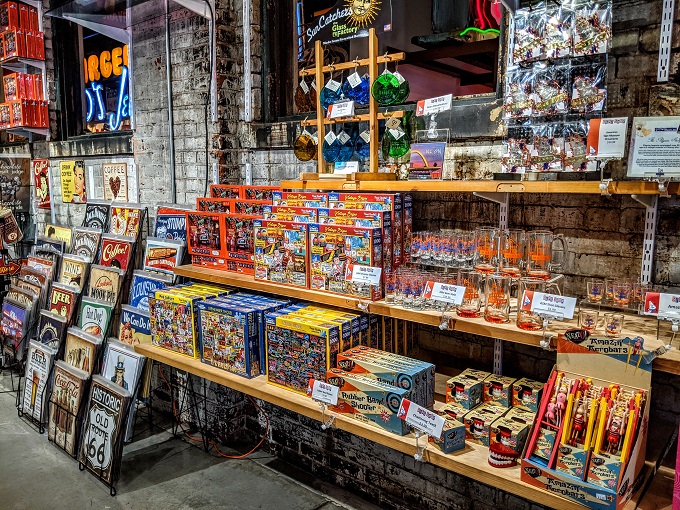
American Sign Museum Ticket Prices
When we visited in July 2020, tickets cost as follows:
- Adults – $15
- Seniors (65+) – $10
- Students (any kind) – $10
- Military – $10
- Children (12 & under) – Free
- Members – Free
Shae and I both enjoyed visiting the American Sign Museum, although we both felt it was priced a little on the high side. The excellent National Underground Railroad Freedom Center in downtown Cincinnati also costs $15, the Cincinnati Fire Museum costs $8, while the Harriet Beecher Stowe House costs $6.
We certainly weren’t disappointed by the American Sign Museum, but it feels like $10-$12 would be a more appropriate price point considering the cost of those other museums in Cincinnati.
Opening Hours
At the time of publishing this post, the museum is open from 10-4 from Wednesday to Saturday and 12-4 on Sundays (it’s closed on Mondays and Tuesdays). If you’re planning a visit in the future though, it would be worth checking their website in case the days and/or hours of opening have changed.
Address
American Sign Museum, 1330 Monmouth Ave, Cincinnati, OH 45225
Nice coverage of a personal favorite.
I think the electricity bill for all the signs is probably the difference in cost for the entrance fee. It wouldn’t be as striking if only some of the signs were lit. It’s one of my favorite museums and I’m happy to pay the price.
This is a very nice write up. Thank you. I went to the old version when it was on Essex in Walnut hills and knew that it had moved. I’m glad to see that it has done well and they’re back open again.